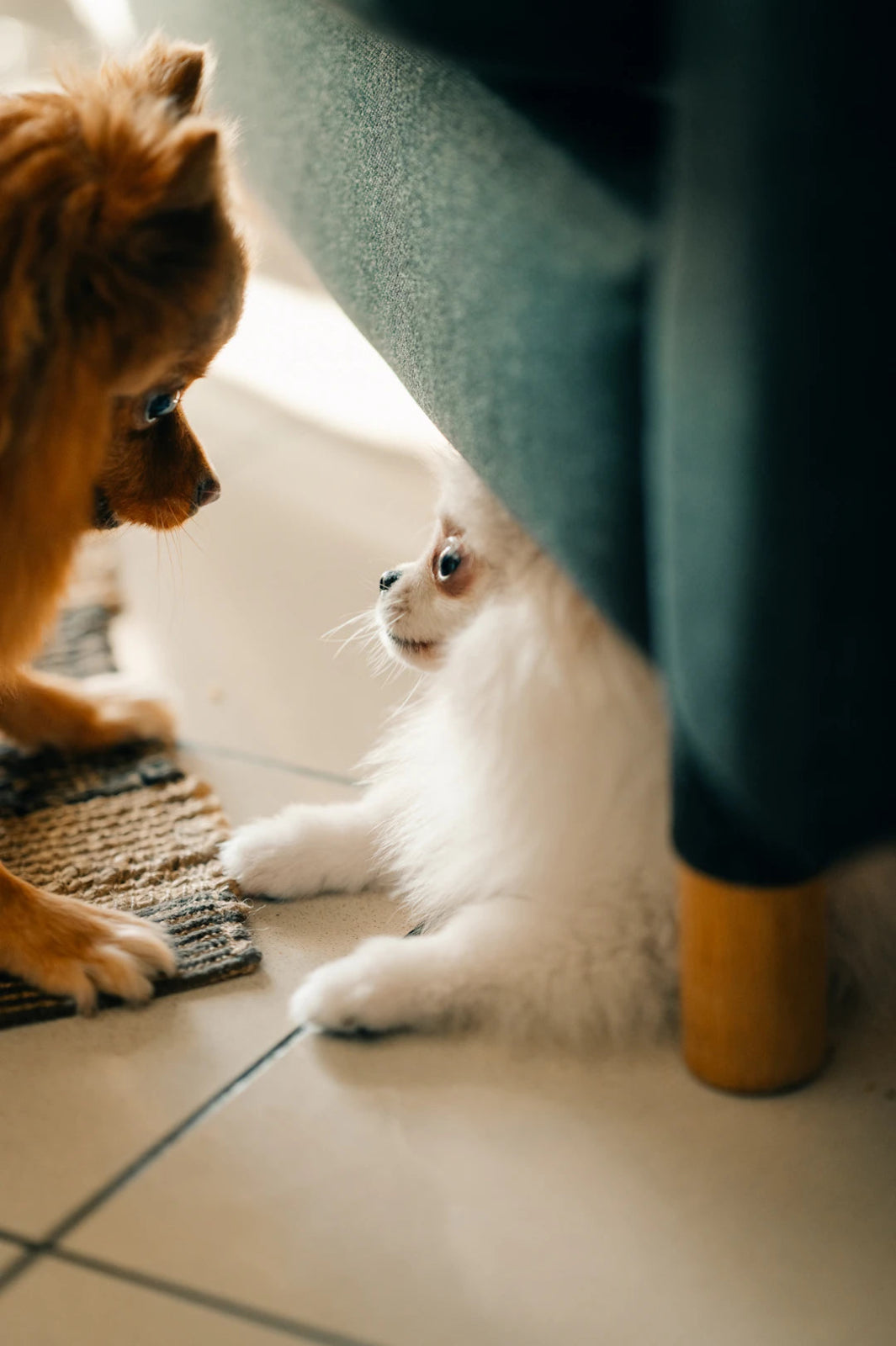Overview
Create a pet-friendly cleaning plan to maintain a clean and safe environment for both pets and owners. Focus on safe cleaning products, assess your cleaning needs based on your pet's behavior, establish a cleaning schedule, and use natural cleaners. Regularly evaluate and adapt your routine to ensure comfort and hygiene for everyone.
Frequently Asked Questions
1. What is a pet-friendly cleaning plan?
2. Why are traditional cleaning products harmful to pets?
3. What are some must-have supplies for pet-friendly cleaning?
4. How often should I clean pet bedding and feeding areas?
5. What natural cleaners can I use instead of conventional cleaners?
Having pets adds joy and companionship to our lives, but it also comes with its fair share of cleaning challenges. Whether you're dealing with fur, stains, or odors, it’s essential to maintain a clean and safe environment for both you and your furry friends. A solid pet-friendly cleaning plan is necessary, and this article will guide you through creating one that works for your home, ensuring comfort and hygiene for everyone involved. With the right approach, your house can be a cozy sanctuary, free of unwanted messes. Let’s dive in!
Understanding Pet-Friendly Cleaning
When designing a pet-friendly cleaning plan, it’s crucial to recognize that traditional cleaning products can be harmful to animals. Many common cleaners contain harsh chemicals that can irritate your pet’s skin or respiratory system. To combat this, consider using an all-in-one cleaner that combines effectiveness with safety. A thorough understanding of cleaning lastingly benefits both your household and your pets.
Assessing Your Cleaning Needs
Evaluate Your Space
Start by assessing your living space. Look for areas that commonly attract pet messes. This can include:
- High-traffic zones, like hallways and entryways.
- Spaces where your pet frequently lounges, such as the living room or bedrooms.
- Feeding and grooming areas.
- Bathrooms and any other small enclosed areas.
By identifying these critical areas, you can prioritize your cleaning efforts, ensuring maximum efficiency.
Recognizing Pet Behavior
Every pet has its personality and habits. Understanding your pet's behavior will greatly influence your cleaning plan. For example, if your dog loves to dig in the yard, you may need to pay extra attention to mud and debris tracked into the house. If you have a cat that frequently sheds, focus on areas where fur accumulates:
- Under furniture.
- On cushions and blankets.
- Near scratching posts or litter boxes.
Choosing the Right Cleaning Supplies
Next, focus on selecting pet-friendly cleaning supplies. An all-in-one cleaner can simplify your cleaning routine, providing versatility for various surfaces. Here are the must-have supplies:
- Microfiber cloths: Great for trapping dirt and fur without chemicals.
- Natural disinfectants: Look for vinegar or baking soda, which are safe for pets.
- Safe odor eliminators: Make sure these are non-toxic, particularly for any lingering pet smells.
- Pet-specific grooming tools: A good brush can help reduce shedding and keep your space cleaner.
These supplies can help you address everyday messes without compromising your pets' safety.
Establishing a Cleaning Schedule
Daily Tasks
Establishing a routine is critical for keeping your home clean and minimizing mess. Here’s a simple list of daily cleaning tasks:
- Vacuum high-traffic areas and pet zones to collect fur.
- Wipe down surfaces to remove dust and allergens.
- Spot clean any accidents immediately to prevent lasting stains.
- Feed your pet in designated areas and clean up any spills right away.
Weekly Deep-Dive
In addition to daily tasks, incorporate these weekly chores into your plan:
- Wash pet bedding, blankets, and any removable furniture covers.
- Disinfect pet bowls and feeding areas with an all-in-one cleaner.
- Thoroughly clean floors, particularly tile and hardwood, to eliminate odor.
- Groom your pet to minimize future shedding.
Monthly Focus
Finally, dedicate time each month for deeper cleaning tasks:
- Thoroughly clean carpets and upholstery with pet-safe solutions.
- Declutter spaces around your home where pet items tend to accumulate.
- Inspect and clean any air filters or vents to ensure proper airflow.
- Evaluate your cleaning supplies and restock as necessary.
Maintaining a Fresh Environment
Beyond just cleaning, think about strategies for maintaining a fresh environment in your home. Here are some tips:
- Use air purifiers to reduce pet dander and improve air quality.
- Open windows when possible for ventilation.
- Invest in washable pet furniture covers.
- Consider a regular bathing schedule for your pet to minimize odors.
Spot Cleaning Strategies
Accidents happen, and knowing how to spot clean effectively can be a lifesaver. Here’s how to tackle some common issues:
Dealing with Pet Hair
Pet hair can quickly accumulate and become a nuisance. For effective control:
- Use lint rollers or sticky tape to quickly pick up hair from upholstery.
- Invest in a vacuum designed for pet hair removal, if necessary.
- Groom your pet regularly to reduce shedding.
Handling Stains and Odors
Whether your pet marks their territory or spills food, the sooner you tackle the issue, the easier it will be. Here’s how to approach stains:
- Blot, don’t rub, to lift any wet stains.
- Apply a mixture of water and an all-in-one cleaner for general stains.
- For tougher stains, use a paste of baking soda and water, let dry, and then vacuum.
Keeping Litter Areas Clean
For cat owners, litter boxes can be a significant source of odors and mess. Consider these tips:
- Choose a litter box that’s easy to clean, and ensure it fits your cat's size.
- Change litter regularly and clean the box with an all-in-one cleaner at least once a week.
- Keep the area around the box clean by placing mats to catch spills.
Building a Pet-Free Zone
While pets are an integral part of our lives, having designated pet-free zones can reduce mess and give you a respite. Here’s how to make it work:
- Choose rooms where pets aren't allowed, such as bedrooms and dining areas.
- Train your pets using positive reinforcement to adapt to these boundaries.
- Use gates or closed doors to establish physical barriers.
Harnessing the Power of Natural Cleaners
Many conventional cleaners can pose hazards to pets. That's why opting for natural cleaning methods can be beneficial:
- Baking soda: Excellent for deodorizing carpets and upholstery.
- Vinegar: Works well as a natural disinfectant that doesn’t leave harmful residues.
- Lemon juice: Acts as a natural stain remover and imparts a fresh scent.
Creating an effective, pet-friendly environment doesn’t mean compromising on cleanliness or safety. Using simple natural solutions can replace harmful chemicals and keep your home refreshed and safe.
Let Your Routine Evolve
It's essential to recognize that your cleaning plan will evolve as your pet grows and changes. New behaviors, health considerations, and even changes in the family can necessitate re-evaluation of your plan. Don't hesitate to adapt and refine your approach, always seeking what provides the best balance of cleanliness and comfort.
Creating a pet-friendly cleaning plan is about more than just removing dirt; it’s about fostering an environment where both you and your pets can thrive together. By focusing on safe products, effective routines, and understanding pet behaviors, you can craft a cleaning blueprint that's both efficient and enjoyable. Happy cleaning!
Linked Product

Ultimate Home Cleaning Kit
The Ultimate Home Cleaning Kit offers a comprehensive solution for maintaining a clean and fresh environment in various spaces of your home. It features all-purpose cleaners, glass cleaners, and specialized cleaning gels, all designed to tackle a variety of surfaces. Additionally, the included scented sachets help keep your closets and drawers smelling pleasant while you clean.
View Product

Share:
The Benefits of Using Natural Cleaning Products
Organize Your Cleaning Supplies for Quick Access